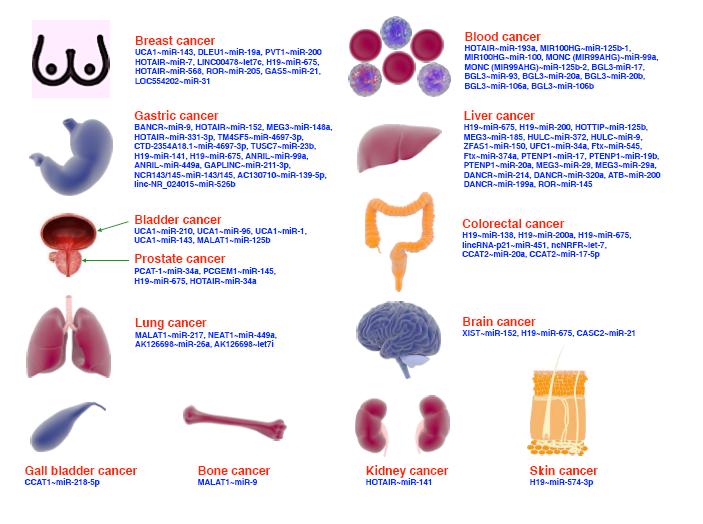| 1. |
Tombeau Cost K, Korczak D, Charach A, et al. Association of parental and contextual stressors with child screen exposure and child screen exposure combined with feeding. JAMA Netw Open, 2020, 3(2): e1920557.
|
| 2. |
Reid Chassiakos YL, Radesky J, Christakis D, et al. Children and adolescents and digital media. Pediatrics, 2016, 138(5): e20162593.
|
| 3. |
肖丹夏, 李宏. 社区1-3岁儿童语言发育与屏幕暴露的相关性调查研究. 中国儿童保健杂志, 2021, 29(2): 186.
|
| 4. |
Huang L, Yang GY, Schmid KL, et al. Screen exposure during early life and the increased risk of astigmatism among preschool children: findings from longhua child cohort study. Int J Environ Res Public Health, 2020, 17(7): 2216.
|
| 5. |
成雪, 于冬梅, 赵丽云, 等. 2016-2017年中国各省中小学生电子屏幕使用现状. 卫生研究, 2023, 52(3): 382-387.
|
| 6. |
Xiang H, Lin L, Chen W, et al. Associations of excessive screen time and early screen exposure with health-related quality of life and behavioral problems among children attending preschools. BMC Public Health, 2022, 22(1): 2440.
|
| 7. |
Tezol O, Yildiz D, Yalcin S, et al. Excessive screen time and lower psychosocial well-being among preschool children. Arch Pediatr, 2022, 29(1): 61-66.
|
| 8. |
彭磊, 徐耿, 宫相君, 等. 学龄前儿童视屏时间与心理行为的关联性. 中国学校卫生, 2020, 41(1): 62-65, 69.
|
| 9. |
Liu M, Wu L, Yao S. Dose-response association of screen time-based sedentary behaviour in children and adolescents and depression: a meta-analysis of observational studies. Br J Sports Med, 2016, 50(20): 1252-1258.
|
| 10. |
Alvarez-Peregrina C, Sánchez-Tena MÁ, Martinez-Perez C, et al. The relationship between screen and outdoor time with rates of myopia in Spanish children. Front Public Health, 2020, 8: 560378.
|
| 11. |
Landreneau JR, Hesemann NP, Cardonell MA. Review on the myopia pandemic: epidemiology, risk factors, and prevention. Mo Med, 2021, 118(2): 156-163.
|
| 12. |
Nagata JM, Smith N, Alsamman S, et al. Association of physical activity and screen time with body mass index among US adolescents. JAMA Netw Open, 2023, 6(2): e2255466.
|
| 13. |
Cai Y, Zhu X, Wu X. Overweight, obesity, and screen-time viewing among Chinese school-aged children: national prevalence estimates from the 2016 physical activity and fitness in China-the youth study. J Sport Health Sci, 2017, 6(4): 404-409.
|
| 14. |
Magee CA, Lee JK, Vella SA. Bidirectional relationships between sleep duration and screen time in early childhood. JAMA Pediatr, 2014, 168(5): 465-470.
|
| 15. |
徐玉英, 王雪琴, 罗莎, 等. 家庭养育环境与1-3岁儿童电子屏幕暴露的相关性分析. 中国儿童保健杂志, 2023, 31(8): 884-888, 923.
|
| 16. |
Neshteruk CD, Tripicchio GL, Lobaugh S, et al. Screen time parenting practices and associations with preschool children's TV viewing and weight-related outcomes. Int J Environ Res Public Health, 2021, 18(14): 7359.
|
| 17. |
Maniccia DM, Davison KK, Marshall SJ, et al. A meta-analysis of interventions that target children's screen time for reduction. Pediatrics, 2011, 128(1): e193-e210.
|
| 18. |
Jones A, Armstrong B, Weaver RG, et al. Identifying effective intervention strategies to reduce children's screen time: a systematic review and meta-analysis. Int J Behav Nutr Phys Act, 2021, 18(1): 126.
|
| 19. |
Chong SC, Teo WZ, Shorey S. Exploring the perception of parents on children's screentime: a systematic review and meta-synthesis of qualitative studies. Pediatr Res, 2023, 94(3): 915-925.
|
| 20. |
Dick B, Ferguson BJ. Health for the world's adolescents: a second chance in the second decade. J Adolesc Health, 2015, 56(1): 3-6.
|
| 21. |
Sterne JAC, Savović J, Page MJ, et al. RoB 2: a revised tool for assessing risk of bias in randomised trials. BMJ, 2019, 366: l4898.
|
| 22. |
Salanti G, Del Giovane C, Chaimani A, et al. Evaluating the quality of evidence from a network meta-analysis. PLoS One, 2014, 9(7): e99682.
|
| 23. |
Nikolakopoulou A, Higgins JPT, Papakonstantinou T, et al. CINeMA: an approach for assessing confidence in the results of a network meta-analysis. PLoS Med, 2020, 17(4): e1003082.
|
| 24. |
Puhan MA, Schünemann HJ, Murad MH, et al. A GRADE working group approach for rating the quality of treatment effect estimates from network meta-analysis. BMJ, 2014, 349: g5630.
|
| 25. |
张天嵩. Stata软件network组命令在网状Meta分析中的应用. 中国循证医学杂志, 2015, 15(11): 1352-1356.
|
| 26. |
Higgins JP, Thompson SG. Quantifying heterogeneity in a meta-analysis. Stat Med, 2002, 21(11): 1539-1558.
|
| 27. |
张超, 耿培亮, 郭毅, 等. 应用R语言netmeta程序包实现网状Meta分析. 中国循证医学杂志, 2014, 14(5): 625-630.
|
| 28. |
Cope S, Jansen JP. Quantitative summaries of treatment effect estimates obtained with network meta-analysis of survival curves to inform decision-making. BMC Med Res Methodol, 2013, 13: 147.
|
| 29. |
杨博文, 陈欣, 孙皓, 等. 网状Meta分析中敏感性分析和一致性分析在R软件中的实现. 中国循证医学杂志, 2015, 15(1): 99-102.
|
| 30. |
Bartlett J, Sanders MR, Tellegen CL, et al. Randomised controlled trial of a brief, low intensity parenting intervention to promote healthy living: the Lifestyle Triple P Seminar Series. J Child Fam Stud, 2023, 32(8): 2347-2359.
|
| 31. |
Downing KL, Salmon J, Hinkley T, et al. Feasibility and efficacy of a parent-focused, text message-delivered intervention to reduce sedentary behavior in 2- to 4-year-old children (mini movers): pilot randomized controlled trial. JMIR Mhealth Uhealth, 2018, 6(2): e39.
|
| 32. |
Faith MS, Berman N, Heo M, et al. Effects of contingent television on physical activity and television viewing in obese children. Pediatrics, 2001, 107(5): 1043-1048.
|
| 33. |
Maddison R, Marsh S, Foley L, et al. Screen-time weight-loss intervention targeting children at home (SWITCH): a randomized controlled trial. Int J Behav Nutr Phys Act, 2014, 11: 111.
|
| 34. |
Robinson TN, Matheson DM, Kraemer HC, et al. A randomized controlled trial of culturally tailored dance and reducing screen time to prevent weight gain in low-income African American girls: Stanford GEMS. Arch Pediatr Adolesc Med, 2010, 164(11): 995-1004.
|
| 35. |
Shelton D, Le Gros K, Norton L, et al. Randomised controlled trial: a parent-based group education programme for overweight children. J Paediatr Child Health, 2007, 43(12): 799-805.
|
| 36. |
Birken CS, Maguire J, Mekky M, et al. Office-based randomized controlled trial to reduce screen time in preschool children. Pediatrics, 2012, 130(6): 1110-1115.
|
| 37. |
Chen JL, Guedes CM, Cooper BA, et al. Short-term efficacy of an innovative mobile phone technology-based intervention for weight management for overweight and obese adolescents: pilot study. Interact J Med Res, 2017, 6(2): e12.
|
| 38. |
Cliff DP, Okely AD, Morgan PJ, et al. Movement skills and physical activity in obese children: randomized controlled trial. Med Sci Sports Exerc, 2011, 43(1): 90-100.
|
| 39. |
Feng J, Huang WY, Sit CH, et al. Effectiveness of a parent-focused intervention targeting 24-hour movement behaviours in preschool-aged children: a randomised controlled trial. Int J Behav Nutr Phys Act, 2024, 21(1): 98.
|
| 40. |
Haines J, McDonald J, O'Brien A, et al. Healthy habits, happy homes: randomized trial to improve household routines for obesity prevention among preschool-aged children. JAMA Pediatr, 2013, 167(11): 1072-1079.
|
| 41. |
Hinkley T, Cliff DP, Okely AD. Reducing electronic media use in 2-3 year-old children: feasibility and efficacy of the Family@play pilot randomised controlled trial. BMC Public Health, 2015, 15: 779.
|
| 42. |
Kaur N, Gupta M, Chakrapani V, et al. Effectiveness of a program to lower unwanted media screens among 2-5-year-old children: a randomized controlled trial. Front Public Health, 2024, 12: 1304861.
|
| 43. |
Walton K, Filion AJ, Gross D, et al. Parents and tots together: pilot randomized controlled trial of a family-based obesity prevention intervention in Canada. Can J Public Health, 2016, 106(8): e555-e562.
|
| 44. |
O'Connor TM, Hilmers A, Watson K, et al. Feasibility of an obesity intervention for paediatric primary care targeting parenting and children: Helping HAND. Child Care Health Dev, 2013, 39(1): 141-149.
|
| 45. |
Yilmaz G, Demirli Caylan N, Karacan CD. An intervention to preschool children for reducing screen time: a randomized controlled trial. Child Care Health Dev, 2015, 41(3): 443-449.
|
| 46. |
Taveras EM, Gortmaker SL, Hohman KH, et al. Randomized controlled trial to improve primary care to prevent and manage childhood obesity: the high five for kids study. Arch Pediatr Adolesc Med, 2011, 165(8): 714-722.
|
| 47. |
左月燃. 对护理专业开展健康教育的认识和思考. 中华护理杂志, 2000, (6): 4-6.
|
| 48. |
Harkin B, Webb TL, Chang BP, et al. Does monitoring goal progress promote goal attainment. A meta-analysis of the experimental evidence. Psychol Bull, 2016, 142(2): 198-229.
|
| 49. |
Kahn EB, Ramsey LT, Brownson RC, et al. The effectiveness of interventions to increase physical activity. A systematic review. Am J Prev Med, 2002, 22(4 Suppl): 73-107.
|
| 50. |
Carr EG, Durand VM. Reducing behavior problems through functional communication training. J Appl Behav Anal, 1985, 18(2): 111-126.
|
| 51. |
林雨欣, 丁雪婷, 刘菊芬, 等. 儿童屏幕暴露的影响因素-家庭养育环境. 中华家教, 2022, (6): 80-87.
|
| 52. |
Council on Communications and Media. Media use in school-aged children and adolescents. Pediatrics, 2016, 138(5): e20162592.
|
| 53. |
Sharma H, Ahuja S. Mitigating factors of screen time on children: a systematic review. Int J Contemp Pediatrics, 2024, 11(11): 1637-1643.
|
| 54. |
Attai P, Szabat J, Anzman-Frasca S, et al. Associations between parental and child screen time and quality of the home environment: a preliminary investigation. Int J Environ Res Public Health, 2020, 17(17): 6207.
|
| 55. |
Lauricella AR, Wartella E, Rideout VJ. Young children's screen time: the complex role of parent and child factors. J Appl Dev Psychol, 2015, 36: 11-17.
|
| 56. |
李望, 陈培友, 吴志建, 等. 以家庭为基础的运动干预对学龄前儿童超重肥胖影响的Meta分析. 中国儿童保健杂志, 2025, 33(2): 214-220.
|
| 57. |
Schmidt ME, Haines J, O'Brien A, et al. Systematic review of effective strategies for reducing screen time among young children. Obesity (Silver Spring), 2012, 20(7): 1338-1354.
|
| 58. |
Ni Mhurchu C, Roberts V, Maddison R, et al. Effect of electronic time monitors on children's television watching: pilot trial of a home-based intervention. Prev Med, 2009, 49(5): 413-417.
|
| 59. |
Bailey J, McComas JJ, Benavides C, et al. Functional assessment in a residential setting: identifying an effective communicative replacement response for aggressive behavior. J Dev Phys Disabil, 2002, 14: 353-369.
|
| 60. |
Ryan RM, Deci EL. Self-determination theory and the facilitation of intrinsic motivation, social development, and well-being. Am Psychol, 2000, 55(1): 68-78.
|
| 61. |
Kandola A, Del Pozo Cruz B, Hayes JF, et al. Impact on adolescent mental health of replacing screen-use with exercise: a prospective cohort study. J Affect Disord, 2022, 301: 240-247.
|
| 62. |
Sterdt E, Liersch S, Walter U. Correlates of physical activity of children and adolescents: a systematic review of reviews. Health Educ J, 2014, 73(1): 72-89.
|
| 63. |
Wang Q, Ma J, Maehashi A, et al. The associations between outdoor playtime, screen-viewing time, and environmental factors in Chinese young children: the "eat, be active and sleep well" study. Int J Environ Res Public Health, 2020, 17(13): 4867.
|




